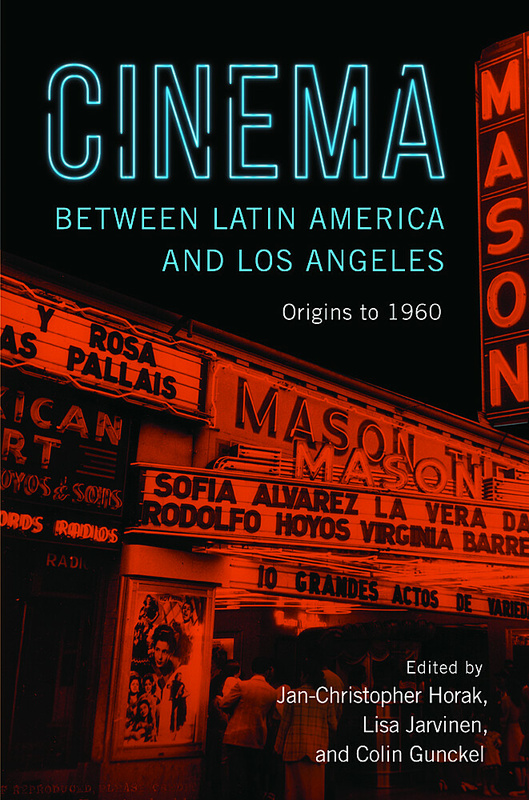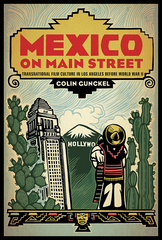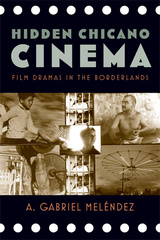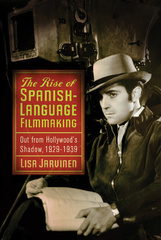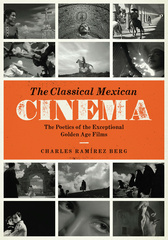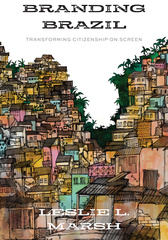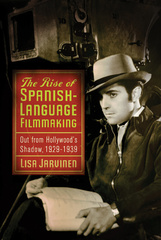Our shopping cart is currently down. To place an order, please contact our distributor, UTP Distribution, directly at utpbooks@utpress.utoronto.ca.
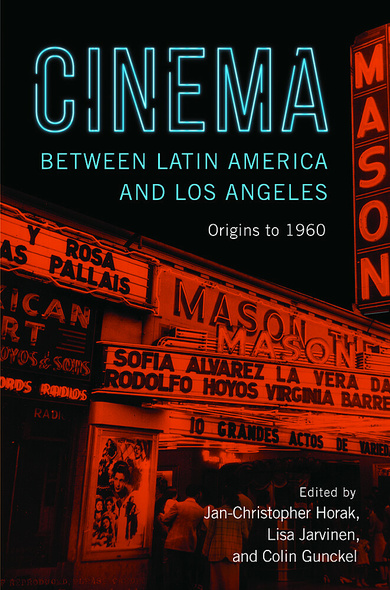
188 pages, 6 x 9
25 b-w
Paperback
Release Date:08 Feb 2019
ISBN:9781978801240
Hardcover
Release Date:08 Feb 2019
ISBN:9781978801257
Cinema between Latin America and Los Angeles
Origins to 1960
Rutgers University Press
Historically, Los Angeles and its exhibition market have been central to the international success of Latin American cinema. Not only was Los Angeles a site crucial for exhibition of these films, but it became the most important hub in the western hemisphere for the distribution of Spanish language films made for Latin American audiences. Cinema between Latin America and Los Angeles builds upon this foundational insight to both examine the considerable, ongoing role that Los Angeles played in the history of Spanish-language cinema and to explore the implications of this transnational dynamic for the study and analysis of Latin American cinema before 1960. The volume editors aim to flesh out the gaps between Hollywood and Latin America, American imperialism and Latin American nationalism in order to produce a more nuanced view of transnational cultural relations in the western hemisphere.
Excavating previously marginalized histories of Spanish-language film culture in the United States and painstakingly tracing its transnational connections, the exhaustively researched anthology Cinema Between Latin America and Los Angeles embodies the most exciting directions in film and media studies today. The volume’s essays offer rich, fine-grained studies of the local informed by international perspectives, considering the political economy of Spanish-language production and distribution, the forging of film publics, and the cross-pollination between cinema and entertainments like musical theater, popular song, and even contemporary fusions of lucha libre and performance art. Deftly rendering the complexities of cross-border exchanges and the role of film consumption in shaping social identities, Cinema Between Latin America and Los Angeles unearths forgotten but fascinating precursors of today's vibrant Latino and Spanish-language media.'
With essays on previously unstudied production and distribution companies, Mexican producers’ attempts to appeal to U.S. audiences, Spanish-language cinema, Edwin Carewe’s Ramona (1928), Mexican teatro de revista, and the Mayan Theater this volume makes a compelling case for viewing Los Angeles as a crossroads for Latin American (especially Mexican) cinema. The authors’ transnational perspective allows them to trace the history of a film culture shaped by intermediality, migration, and vibrant border crossing entertainment cultures. The essays in this volume offer nothing less than a prehistory of Latino media.'
Highly recommended.
Cinema between Latin America and Los Angeles: Origins to 1960 is not just ‘another book about cinema’, but an original, eclectic and to some extent brave contribution to the field. Instead of limiting itself to an audience of film scholars and historians, the book widens its scope to cinema aficionados interested in knowing about the presence and the essence of Spanish- language films up to 1960.
Excavating previously marginalized histories of Spanish-language film culture in the United States and painstakingly tracing its transnational connections, the exhaustively researched anthology Cinema Between Latin America and Los Angeles embodies the most exciting directions in film and media studies today. The volume’s essays offer rich, fine-grained studies of the local informed by international perspectives, considering the political economy of Spanish-language production and distribution, the forging of film publics, and the cross-pollination between cinema and entertainments like musical theater, popular song, and even contemporary fusions of lucha libre and performance art. Deftly rendering the complexities of cross-border exchanges and the role of film consumption in shaping social identities, Cinema Between Latin America and Los Angeles unearths forgotten but fascinating precursors of today's vibrant Latino and Spanish-language media.'
With essays on previously unstudied production and distribution companies, Mexican producers’ attempts to appeal to U.S. audiences, Spanish-language cinema, Edwin Carewe’s Ramona (1928), Mexican teatro de revista, and the Mayan Theater this volume makes a compelling case for viewing Los Angeles as a crossroads for Latin American (especially Mexican) cinema. The authors’ transnational perspective allows them to trace the history of a film culture shaped by intermediality, migration, and vibrant border crossing entertainment cultures. The essays in this volume offer nothing less than a prehistory of Latino media.'
Highly recommended.
Cinema between Latin America and Los Angeles: Origins to 1960 is not just ‘another book about cinema’, but an original, eclectic and to some extent brave contribution to the field. Instead of limiting itself to an audience of film scholars and historians, the book widens its scope to cinema aficionados interested in knowing about the presence and the essence of Spanish- language films up to 1960.
JAN-CHRISTOPHER HORAK is the director of the University of California, Los Angeles Film and Television Archive and a professor for critical studies at UCLA. He is the author of several books, including Making Images Move: Photographers and Avant-Garde Cinema.
LISA JARVINEN is an associate professor of history at La Salle University in Philadelphia, Pennsylvania. She is the author of The Rise of Spanish-Language Film Making: Out from Hollywood’s Shadow, 1929-1939 (Rutgers University Press).
COLIN GUNCKEL is an associate professor of screen arts and cultures, American culture, and Latina/o Studies at the University of Michigan, Ann Arbor. He is the author of Mexico on Main Street: Transnational Film Culture in Los Angeles before World War II (Rutgers University Press).
LISA JARVINEN is an associate professor of history at La Salle University in Philadelphia, Pennsylvania. She is the author of The Rise of Spanish-Language Film Making: Out from Hollywood’s Shadow, 1929-1939 (Rutgers University Press).
COLIN GUNCKEL is an associate professor of screen arts and cultures, American culture, and Latina/o Studies at the University of Michigan, Ann Arbor. He is the author of Mexico on Main Street: Transnational Film Culture in Los Angeles before World War II (Rutgers University Press).
Table of Contents
Acknowledgements
Bibliography
Index
Acknowledgements
- Introduction, Colin Gunckel, Jan-Christopher Horak, and Lisa Jarvinen
- El espectáculo: The Culture of the revistas in Mexico City and Los Angeles (1900−40), Jacqueline Avila
- Ramona in the City: Mexican Los Angeles, Dolores Del Rio, and the Remaking of a Mythic Story, Desirée J. Garcia
- Please Sing to Me: The Immigrant Nostalgia that Sparked the Mexican Film Industry, Viviana García Besné and Alistair Tremps
- A Mass Market for Spanish-language Films: Los Angeles, Hybridity, and the Emergence of Latino Audiovisual Media, Lisa Jarvinen
- Cantabria Films and the L.A. Film Market, 1938-1940, Jan-Christopher Horak
- A Cinema between Mexico and Hollywood: What We Can Learn from Adaptations, Remakes, Dubs, Talent Swaps and Other Curiosities, Colin Gunckel
- On the NUEVO TEATRO MÁXIMO DE LA RAZA: Still Thinking, Feeling and Speaking Spanish on and off Screen, Nina Hoechtl
Bibliography
Index

